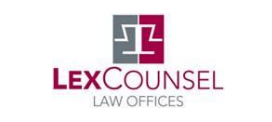
Can a Sound Mark be Registered as a Trademark – European Union Court’s Ruling
If you have questions or would like additional information on the material covered herein, please contact:
The General Court of the European Union (“Court”), on July 7, 2021, issued a first ruling1 (refer to the press release here)2 in relation to…

Can a Sound Mark be Registered as a Trademark – European Union Court’s Ruling
The General Court of the European Union (“Court”), on July 7, 2021, issued a first ruling1 (refer to the press release here)2 in relation to the registration of a sound sign submitted in an audio format as an EU trademark in the case of Ardagh Metal Beverage Holdings v EUIPO (T-668/19).
Factual Background
Ardagh Metal Beverage Holdings GmbH & Co. KG (“Applicant”) filed an application for the registration of a sound sign as an EU trademark with the European Union Intellectual Property Office (“EUIPO”). That sign, submitted as an audio file, “recalls the sound made by a beverage can being opened, followed by a silence of approximately one second and a fizzing sound lasting approximately nine seconds”. The Applicant sought registration in relation to “various drinks and metal containers for storage or transport”. EUIPO rejected the application for registration on the ground that the mark applied for was not distinctive. The Court also dismissed the action brought by the Applicant and clarified the criteria for assessing the distinctive character of sound marks and the perception of those marks in general by consumers.
Key Observations of the Court (as observed in the Judgement)
- The Court stipulated that the criteria for assessing the distinctive character of sound marks do not differ from those applicable to other categories of marks and a sound mark must have a “certain resonance which enables the target consumer to perceive it as a trademark” and not as a “functional element or as an indicator without any inherent characteristics”.
- Thus, the consumer of the goods or services in question must, by the simple perception of the sound mark, without it being combined with other elements such as, word or figurative elements, or even another mark, be able to “associate it with their commercial origin”.
- The sound produced during the opening of a can will be considered “a purely technical and functional element”. The opening of a can or bottle is inherent to a technical solution connected to handling of drinks in order to consume them and “such a sound will therefore not be perceived as an indication of the commercial origin of those goods”.
- The relevant public immediately associates the sound of fizzing bubbles with drinks/beverages and “the sound elements and the silence of approximately one second, taken as a whole, do not have any inherent characteristic that would make it possible for them to be perceived by that public as being an indication of the commercial origin of the goods”. Those elements are not resonant enough to distinguish themselves from comparable sounds in the field of drinks.
- The Court however questioned and refuted EUIPO’s finding that it is unusual on the market for drinks and their packaging to indicate the commercial origin of a product using sounds alone on the ground that those goods are silent until they are consumed. The Court observed that “most goods are silent in themselves and produce a sound only when they are consumed”. Thus, the fact that a sound is made only on consumption does not mean that the use of sounds to indicate the commercial origin of a product on a specific market would be unusual.
Judgement of the Court
Based on the observations discussed above, the Court refused to interfere with EUIPO’s contested decision and confirmed EUIPO’s findings relating to the lack of a distinctive character of the mark applied for. The Court held that an audio file consisting of the sound made by the opening of a drinks can, followed by silence and a fizzing sound, cannot be registered as a trademark in respect of various drinks and for metal containers for storage or transport, in so far as it is not distinctive.
The above judgement is an interesting start to applicants claiming sound mark registrations in the future. Considering that the Court confirmed that the criteria for assessing the distinctive character of sound marks do not differ from those applicable to other categories of marks, application for registration of a sound mark can be made as long as the sound mark has a certain resonance, characteristics or distinctiveness which enables the consumers to perceive it as a trademark. It is evident that organisations often attempt to capitalise on their unique traits and try to distinguish themselves in consumer interaction experience. A similar application was submitted by the motorcycle brand Harley-Davidson, in 1994, when it attempted to trademark its distinctive V-twin engine sound and like the Applicant, Harley-Davidson was unsuccessful in registering the sound mark.
Endnotes:
[1] https://curia.europa.eu/juris/documents.jsf?num=T-668/19
[2] https://curia.europa.eu/jcms/upload/docs/application/pdf/2021-07/cp210120en.pdf
Feedback
Disclaimer: LexCounsel provides this e-update on a complimentary basis solely for informational purposes. It is not intended to constitute, and should not be taken as, legal advice, or a communication intended to solicit or establish any attorney-client relationship between LexCounsel and the reader(s). LexCounsel shall not have any obligations or liabilities towards any acts or omission of any reader(s) consequent to any information contained in this e-newsletter. The readers are advised to consult competent professionals in their own judgment before acting on the basis of any information provided hereby.
